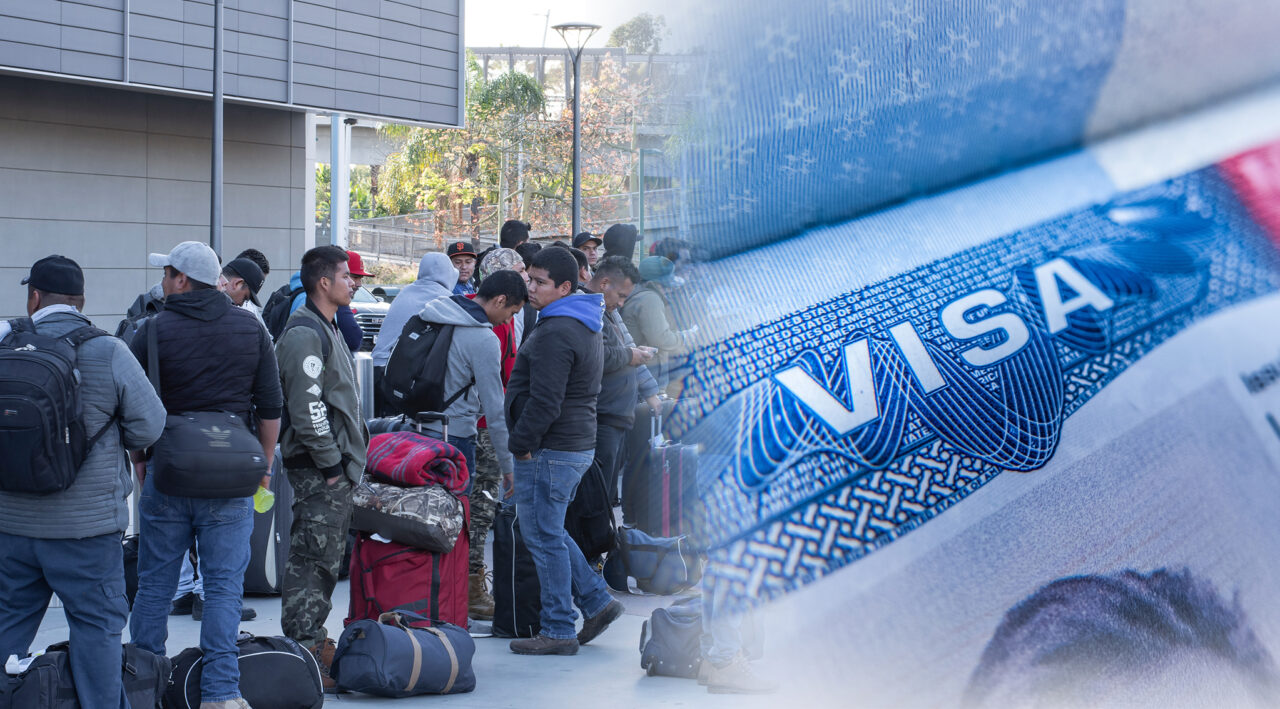Airport in Panama Could Be Used for Repatriation Flights
The Center’s Todd Bensman recently noted that the only sure way to reduce the flow of illegal aliens through eastern Panama’s treacherous Darien Gap is to fly them home.
That would require Panama to stop its participation in what is termed “controlled flow”. The idea dates back to 2015, whereby the governments of Panama and Costa Rica transport migrants who survive the perilous journey through the Darien Gap through their countries to the next closest to the United States. Panama arranges for the aliens to be bused to the Costa Rican border, then Costa Rica makes sure they get to the Nicaraguan border. This assistance merely encourages more illegal migration.
A “controlled flow” migrant bus from Darien headed to Costa Rica on the Inter-American Highway just west of Río Hato, Panama. Photo by author.
The answer to how to replace “controlled flow” of illegal immigrants with air repatriation lies in the small Panamanian town of Rio Hato: Scarlett Martinez International Airport.
In 1938, 64 miles beyond what was then the western edge of the Panama Canal Zone, the U.S. Army Air Force opened an air base in Rio Hato to support the defense of the canal. The base operated through 1948, when the United States returned it to the Republic of Panama, though it continued to serve as an auxiliary landing field until 1990 for Howard Air Force Base.
Prior to the U.S. invasion of Panama in 1989, Rio Hato was nominally a Panamanian Air Force Base under the Panamanian Defense Forces (PDF). With the disbandment of the PDF in 1990 in favor of rigidly overseen national police, the base became home to the national police and other law enforcement agencies; there was little need to maintain the “military” airport at Rio Hato.
In 2011, in the aftermath of the great recession, then-President Ricardo Martinelli Berrocal’s modernization plans for Panama included expanding Tocumen International Airport – Panama’s primary one – to focus on business flights and those connecting elsewhere in the Americas, while renovating the airport at Rio Hato (renamed Scarlett Martinez International Airport) to accept commercial passenger air traffic, especially foreign tourists headed to the nearby Pacific beaches.
The problem is that while Martinelli built Scarlett Martinez, the tourists aren’t coming, at least not in any significant numbers. Currently, the airport is only serviced by four airlines; two Panamanian domestic carriers and two Canadian carriers, which only do so seasonally. As of the writing of this post, there have only been 37 arrivals in the past 30 days.
However, the lack of passengers at Rio Hato, its near equidistance between the Costa Rica-Panama border and where the Inter-American Highway terminates at the Darien, and its 8,038-foot runway make the airport a natural departure point for repatriation flights for the nearly 700 migrants per day who exit the jungle on the Panamanian side of the Darien Gap (and a hub for deportation flights from the United States that don’t occur aboard commercial airlines). Such flights are operated by contracted Boeing 737, 767, and 777s to countries around the world.
While Martinelli has declared his candidacy for a second (non-consecutive term) for president, Americans shouldn’t have to wait to see how the 2024 elections – in both countries – play out to pursue the use of Scarlett Martinez to deter migrants from coming from South America and beyond through Panama to our Southwest border.






